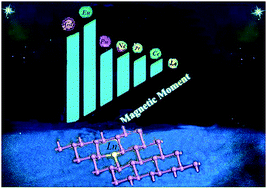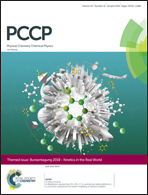Lanthanide atom substitutionally doped blue phosphorene: electronic and magnetic behaviors
Abstract
The structure, energy, electronic and magnetic properties of lanthanide (La, Ce, Pr, Nd, Pm, Eu and Gd) doped blue phosphorene are systematically investigated by using the GGA+U method. The calculated results show that the semi-metallic or dilute magnetic semiconductor characteristics can be achieved by substitutional doping of lanthanide atoms in blue phosphorene. From La- to Gd-doped blue phosphorene, the calculated spin magnetic moments are respectively 0.0, 1.0, 2.0, 3.0, 4.0, 8.0 and 7.0 μB, which are generally proportional to the number of the spin-parallel 4f electrons in dopants. The spin charge density and Bader charge analysis indicate that the magnetic moments of the lanthanide atom doped systems mainly originate from the lanthanide atoms. Specifically, the Pr-doped system has a magnetocrystalline anisotropy energy (MAE) of up to 66.68 meV with the easy axis parallel to the blue phosphorene plane, and the MAE could be enhanced to 103.51 meV by applying an electric field. The Pr-, Nd-, Pm- and Gd-doped blue phosphorenes have dilute magnetic semiconductor properties, while Ce- and Eu-doped blue phosphorenes exhibit half-metallic behavior. Interestingly, the La, Pr and Nd atom doping can all lead to an indirect-to-direct band gap transition. This study indicates that lanthanide-doped blue phosphorene could be a novel dilute magnetic semiconductor material applied in spintronics and magnetic storage devices.

- This article is part of the themed collection: 2018 PCCP HOT Articles


 Please wait while we load your content...
Please wait while we load your content...